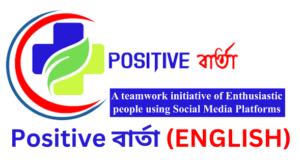What is Metaverse: The metaverse is a hypothetical iteration of the internet as a universal and immersive virtual world focused on social connection. The term is often used to describe the convergence of virtual reality (VR), augmented reality (AR), and the internet, creating a simulated environment that can be shared by users.
The metaverse is still in its early stages of development, but it has the potential to revolutionize the way we interact with each other and with the world around us. It could be used for a variety of purposes, including social networking, gaming, education, and business.
Defining the Metaverse:
The metaverse is a virtual, interconnected universe or network of digital spaces where users can interact with one another and digital objects. It’s a concept that envisions a collective virtual shared space that encompasses multiple virtual and augmented reality platforms, where people can work, socialize, play, and conduct various activities.
This concept has its roots in science fiction, particularly in the novel “Snow Crash” by Neal Stephenson and “Ready Player One” by Ernest Cline. These books introduced the idea of a digital, immersive universe where users could engage with one another and digital elements, from gaming to commerce and socializing.
Key Components of the Metaverse:
- Immersive Virtual Environments: The metaverse is built upon immersive technologies such as virtual reality (VR) and augmented reality (AR). These technologies create lifelike digital spaces where users can interact through avatars, explore 3D environments, and experience a sense of presence.
- Interconnectivity: The metaverse is not a single platform but a network of interconnected digital spaces. This means you can seamlessly move from one virtual environment to another, just as you move between websites on the internet.
- User-Generated Content: Much like the internet allows users to create websites, the metaverse allows users to create and share their own digital experiences. From virtual art galleries to custom-built virtual worlds, user-generated content is a vital part of the metaverse.
- Economy and Commerce: In the metaverse, there’s the potential for a vibrant virtual economy where users can buy, sell, and trade digital goods and services. Blockchain technology and cryptocurrencies are often associated with metaverse economies, providing secure and transparent transactions.
- Social Interaction: Just as in the physical world, the metaverse is about social connections. Users can communicate with others through text, voice, and video, making it a platform for socializing, networking, and collaborating.
The Technological Foundations:
To make the metaverse a reality, several cutting-edge technologies play a crucial role:
- Virtual Reality (VR) and Augmented Reality (AR): These technologies are the backbone of the metaverse, providing the immersive experiences that make virtual worlds feel tangible.
- Blockchain and Cryptocurrency: Blockchain technology underpins the security and trust needed for metaverse transactions and ownership of digital assets.
- Artificial Intelligence (AI): AI is used for creating intelligent avatars, NPCs (non-player characters), and for enhancing the realism and interactivity within the metaverse.
- Cloud Computing: The metaverse relies on vast computing resources to host and deliver immersive experiences to users. Cloud computing is pivotal in this regard.
The Potential of the Metaverse:
The metaverse holds enormous potential in a variety of fields, including:
- Gaming: Many popular video games are already adopting metaverse features, enabling players to socialize, trade virtual goods, and immerse themselves in digital worlds.
- Education: The metaverse can revolutionize education by providing immersive learning experiences and fostering collaboration among students and teachers.
- Work and Collaboration: Remote work is becoming increasingly common, and the metaverse can offer new ways to collaborate and connect in a virtual workspace.
- Entertainment and Media: The metaverse can offer unique, interactive entertainment experiences, from virtual concerts to immersive storytelling.
- Commerce: Virtual commerce is on the rise, with businesses exploring metaverse platforms for e-commerce, advertising, and customer engagement.
- Healthcare: Virtual healthcare services and telemedicine can benefit from the metaverse by offering more immersive and interactive patient-doctor interactions.
Challenges and Concerns:
While the metaverse offers immense potential, it also comes with challenges and concerns. These include:
- Privacy and Security: Maintaining user data privacy and security in an interconnected digital universe is a significant challenge.
- Digital Addiction: The metaverse may lead to concerns about overuse and digital addiction.
- Digital Divide: Access to the metaverse may not be equitable, creating a digital divide between those who can participate and those who cannot.
- Monopoly and Centralization: The emergence of a few dominant companies in the metaverse space could lead to monopoly power and centralization concerns.
Read More: Improving the Overall Quality of Education Through Information Technology







